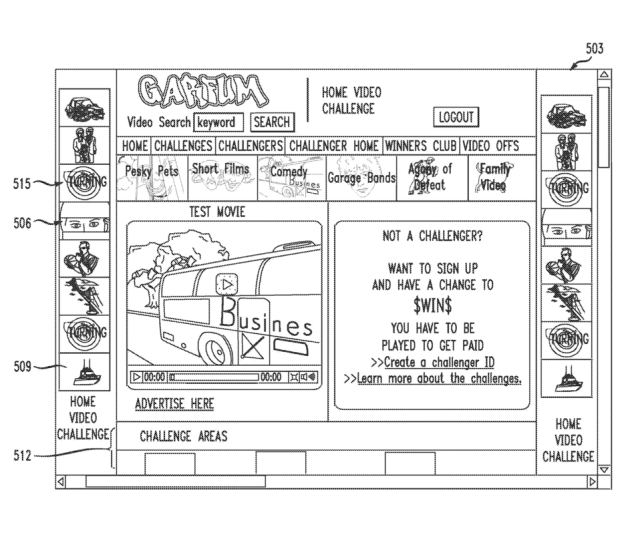
A New Jersey man named Michael Garofalo had a patent he claimed covered online contests, and used it to demand money from other small businesses. But when the Electronic Frontier Foundation came to the defense of a photographer targeted by Garofalo last year, Garofalo quickly dropped his case. Last month, he and his lawyers were ordered to pay $29,000 in legal fees.
Now Garofalo, who owns the website Garfum.com, is asking for the fee smackdown to be reconsidered. His reasoning: since the US Patent and Trademark Office recently agreed to grant him another patent, nearly identical to the first, his case couldn't possibly be considered "exceptional."
"This new evidence shows that this case does not lack substantive strength," writes Garfum.com's lawyers, from the Texas-based Austin Hansley law firm. "Simply put, how could Plaintiff’s position lack substantive strength when the USPTO performed the same § 101 analysis as this Court and found nearly identical claims to recite patentable subject matter?"
Section 101 is the part of patent law that EFF said should invalidate the Garfum patent. In the Alice Corp v. CLS Bank case, the Supreme Court held that Section 101 bars patents that describe abstract ideas, even if they add "do it on a computer" language.
In their 23-page motion for reconsideration (PDF), Garofalo's lawyers continue to insist that his website was a "new and useful platform [that] allowed the users to upload, categorize, view, and rate multi-media content in a way that was not available anywhere else" when it began development in 2007.
The website that Garofalo sued, photographer Ruth Taylor's Bytephoto.com, has been around since 2003.
“Consisting” vs. “Comprising”
While Garofalo's lawyers see getting a new patent as an argument in their client's favor, one could also see the miniscule changes that led to another patent grant as an indictment of the US Patent Office. The examiner allowed a "continuation application" to be processed and approved, even though it uses language practically indistinguishable from the original, now invalidated, patent.
In the chart Garofalo's counsel provide, which can be viewed on pages 3 and 4 of the memo linked above, they note that the original patent describes "a method for sharing multi-media content... in a computer network consisting of" of various traits. Meanwhile, the continuation application claims "a method for sharing multi-media content... in a computer network comprising" those same traits.
Another section of the original patent's main claim describes "establishing a hierarchy for the uploaded multi-media content within the competitive format by implementing a competitive measurement system." In the newer application, the claim describes "establishing a hierarchy for the uploaded multi-media content within the competitive format as a function of a competitive measurement system."
The original patent describes "enabling each user to designate a single point... for each one of a plurality of competitive rounds." The new application describes "enabling the users, over a first time period, to designate a single point... for each one of a plurality of competitive rounds."In the incredible world of patents, such small-time word changes amount to a brand new "invention." (To see the full side-by-side chart detailing the differences, check pages 3 and 4 of the motion linked above.)
A note from the court clerk in the docket suggests US Chief District Judge Jerome Simandle will rule on the motion for reconsideration next month.
In an e-mail to Ars regarding the reconsideration request, EFF lawyer Daniel Nazer pointed out that Garfum already argued this application was relevant to its case, and that was rejected by the judge.
"Judge Simandle's ruling was based on multiple factors, including the fact that Garfum submitted an expert declaration that was inconsistent with the text of its own patent," EFF lawyer Daniel Nazer said in response to an e-mail from Ars. He also noted Garfum already brought up the patent office actions earlier in the case. "We are hopeful that the judge will stick with his original ruling."
Earlier in the litigation, EFF argued that Garofalo's patent isn't valid under the Alice Corp. precedent. However, Simandle never ruled on that motion, because Garofalo dropped the case.
In his opinion granting fees, Simandle noted that the patent described creating accounts, uploading and organizing content, and having users vote on it. In the judge's view, after the Alice Corp. decision, it should have been clear that didn't amount to an "invention" at all.
"The practice of ranking things in categories based on popular vote was well-known before the advent of the Internet, or even computers, and the requirement to involve an online database does not make the claim inventive," wrote Simandle. "Any person with pen or paper could perform the same steps."
reader comments
80